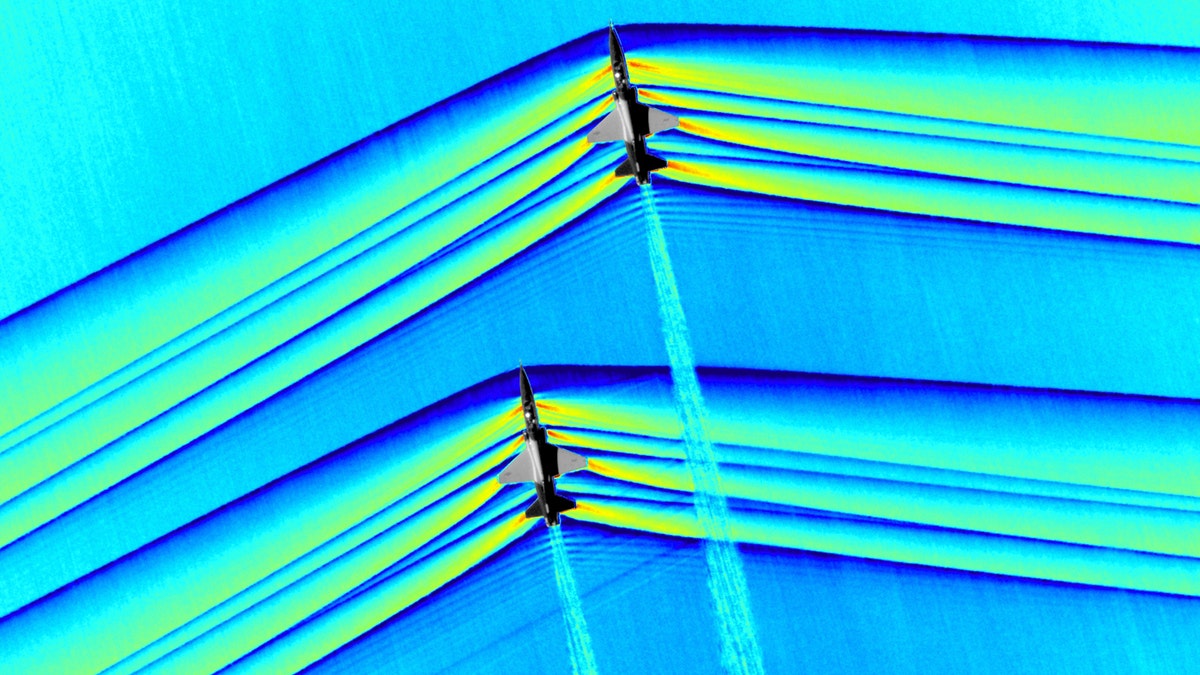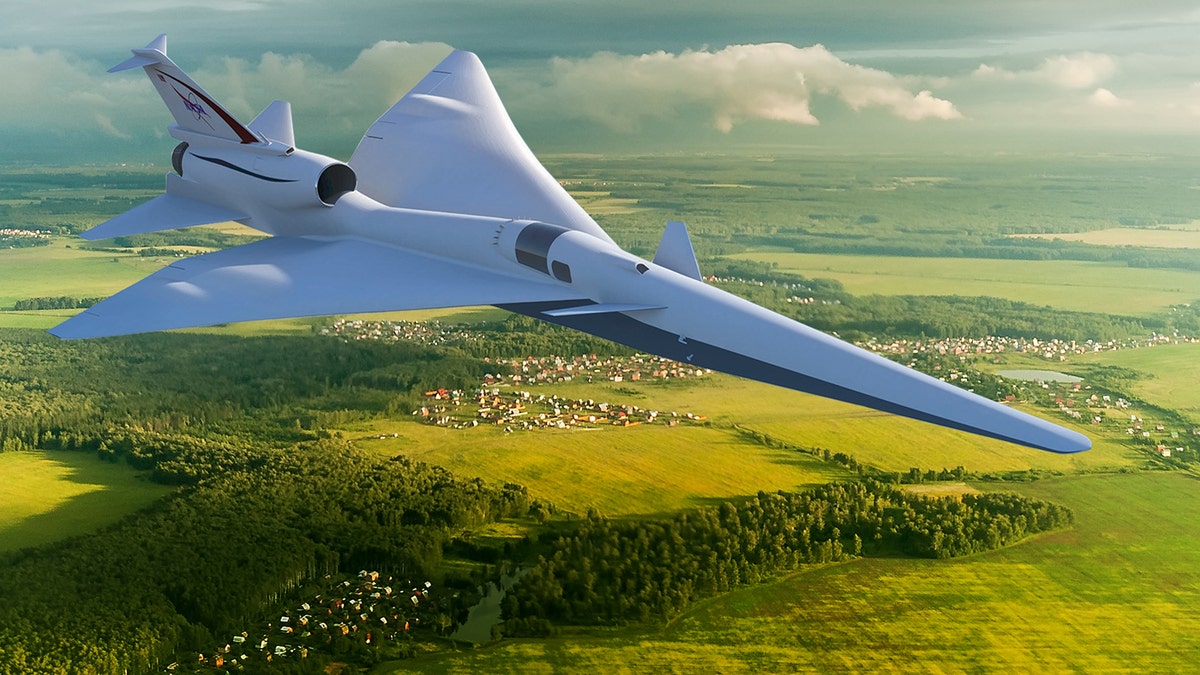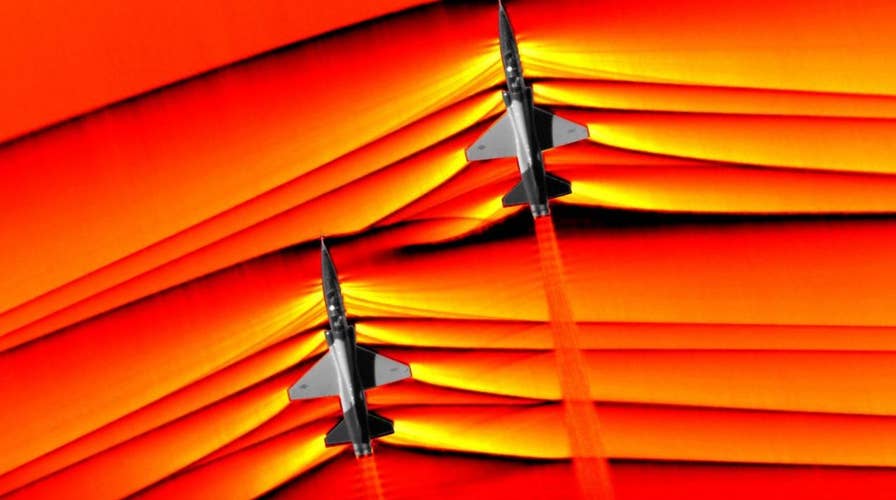NASA captures stunning images showing colliding shock waves from two pairs of T-38 jets flying at supersonic speeds
NASA captures stunning images showing colliding shock waves from T-38 jets flying at supersonic speeds.
NASA captured a stunning, first-of-its-kind image showing the colliding shock waves from two jets flying at supersonic speeds.
The images, which feature a pair of T-38s from the U.S. Air Force Test Pilot School at Edwards Air Force Base flying in formation, give a clear view of the intersecting shock waves from the two jets.
Shock waves are produced due to rapid pressure changes that occur when a plane flies at supersonic speeds.
According to a statement from NASA, the jets were flying about 30 feet away from each other, with a King Air flying about 2,000 feet above them — all of it perfectly timed so that the cameras could record the images within seconds.
ZUCKERBERG LAYS OUT VISION FOR PRIVACY-FOCUSED SOCIAL NETWORKING
"What’s interesting is, if you look at the rear T-38, you see these shocks kind of interact in a curve,” Neal Smith, a research engineer with AerospaceComputing Inc. at NASA Ames’ fluid mechanics laboratory, said in a statement. "This is because the trailing T-38 is flying in the wake of the leading aircraft, so the shocks are going to be shaped differently. This data is really going to help us advance our understanding of how these shocks interact."

When aircraft fly faster than the speed of sound, shock waves travel away from the vehicle, and are heard on the ground as a sonic boom. (NASA Photo)
Researchers have been interested in studying how shock waves interact for a long time. The images, which were captured during the fourth phase of Air-to-Air Background Oriented Schlieren flights, or AirBOS, were taken from a NASA B-200 King Air that had a significantly upgraded camera system and data storage system.
The space agency says that the data from the AirBOS flights will be analyzed, helping NASA refine their techniques so that future flights could take place at even higher altitudes. The research will help advance knowledge of the unique traits of shock waves as NASA progresses toward quiet supersonic research flights with the X-59 and moves closer to a major aviation milestone.
PHONE SALES ARE FALLING, AND APPLE'S APP FEES MIGHT BE NEXT

The X-59 Quiet SuperSonic Technology X-plane, or QueSST, will test its quiet supersonic technologies by flying over communities in the United States. (NASA Image) (NASA Image)
“The biggest challenge was trying to get the timing correct to make sure we could get these images,” said Heather Maliska, AirBOS sub-project manager, in a statement. “I’m absolutely happy with how the team was able to pull this off. Our operations team has done this type of maneuver before. They know how to get the maneuver lined up, and our NASA pilots and the Air Force pilots did a great job being where they needed to be.”
“They were rock stars,” she added.

